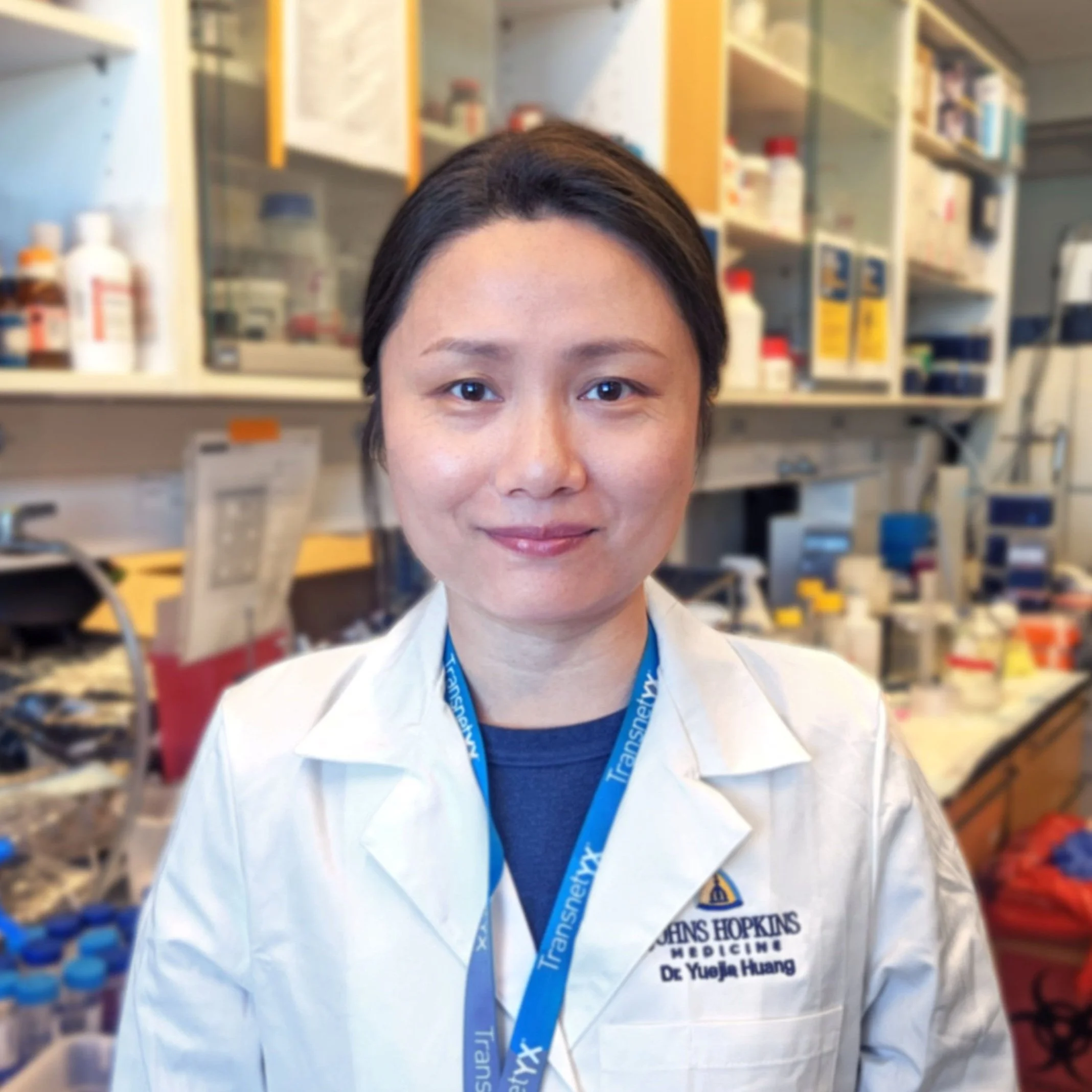THE XU LAB
The overarching research theme of Xu group is establishing ‘authentic’ human neural cultures and identifying new molecular causes of neurodegenerative diseases. Using the human ES/iPS and gene-editing technology, the Xu group has developed many robust and assemblable human brain cell systems. These two- and three-dimensional (2D & 3D) brain assemblies contain balanced human excitatory and inhibitory functional neural networks, astrocytes, oligodendrocytes, microglia, vascular endothelia, and pericytes. The Xu group has been using these human brain cells to decode the neuron activity-dependent survival pathways and chronic inflammatory conditions in Alzheimer’s disease and neurological Infections (e.g., HIV and coronavirus) in basic neurobiology and in clinical neurology. In addition to unraveling the fundamental pathological properties of neural diseases, the Xu group also works on the development of optimal human cellular transplantation approaches and translational pathways for a broad range of neurologic conditions, such as stroke and PD.
Jinchong Xu, MD, PhD
TITLE
Assistant Professor of Neurology
EDUCATION
M.D. Neuropathology, Xiang-Ya (Hunan-Yale) School of Medicine
Ph.D. Neurobiology, Medical Faculty Hamburg-Eppendorf, Germany
RESEARCH FOCUS
Neurological Disorders, Human Pluripotent Stem Cell, Gene editing, Transcriptomics and Cellular Transplantation
RESEARCH TEAM
-

Yuejia Huang, PhD
SR RESEARCH FELLOW
-

Terry Haohui Fang, MSc
RESEARCH SPECIALIST
-

Yun Bai
SR RESEARCH SPECIALIST
-

Sasha George
GRADUATE STUDENT
Individualized Genomics
-

Xiaoli Rong, MD, PhD
POSTDOCTORAL FELLOW
SELECTED PUBLICATIONS
Kim, J. W., Yin, X., Jhaldiyal, A., Khan, M. R., Martin, I., Xie, Z., Perez-Rosello, T., Kumar, M., Abalde-Atristain, L., Xu, J.-C., Chen, L., Eacker, S. M., Surmeier, D. J., Ingolia, N. T., Dawson, T. M., Dawson, V. L. “Defects in mRNA Translation in LRRK2-Mutant hiPSC-Derived Dopaminergic Neurons Lead to Dysregulated Calcium Homeostasis.” (2020) Cell Stem Cell, S1934-5909 (20)30398-2.
Yin, X*, Xu, J.-C.*, Cho, G-S., Kwon, C., Dawson, T.M., Dawson, V.L. “Neurons derived from human inducible pluripotent stem cells integrate into rat brain circuits and maintain both excitatory and inhibitory synaptic activities.” (2019) eNeuro. 6(4). (*equal contribution, article highlighted on eNeuro.org homepage).
McCall MN, Kim MS, Adil M, Patil AH, Lu Y, Mitchell CJ, Leal-Rojas P, Xu, J.-C., Kumar M, Dawson VL, Dawson TM, Baras AS, Rosenberg AZ, Arking DE, Burns KH, Pandey A, Halushka MK. Toward the human cellular microRNAome. Genome Research. 2017:(10):1769-1781.
Xu, J.-C., Fan, J., Wang, X., Eacker, S.M., Kam, T.-I., Chen, L., Yin, X., Zhu, J., Chi, Z., Jiang, H., Chen, R., Dawson, T.M., Dawson, V.L. “Cultured networks of excitatory projection neurons and inhibitory interneurons for studying human cortical neurotoxicity.” (2016) Science Translational Medicine, 8 (333), art. no. ra48.
Xu, J.-C., Xiao, M.-F., Jakovcevski, I., Sivukhina, E., Hargus, G., Cui, Y.-F., Irintchev, A., Schachner, M., Bernreuther, C. “The extracellular matrix glycoprotein tenascin-R regulates neurogenesis during development and in the adult dentate gyrus of mice.” (2014) Journal of Cell Science, 127 (3), pp. 641-652.
Xu, J.-C., Xiao, M.-F., Jakovcevski, I., Sivukhina, E., Hargus, G., Cui, Y.-F., Irintchev, A., Schachner, M., Bernreuther, C. “The extracellular matrix glycoprotein tenascin-R regulates neurogenesis during development and in the adult dentate gyrus of mice.” (2014) Journal of Cell Science, 127 (3), pp. 641-652.
Harraz MM, Xu, J.-C., Guiberson N, Dawson TM, Dawson VL. MiR-223 regulates the differentiation of immature neurons. Molecular and Cellular Therapies. 2014:2(18).
Xu, J.-C., Dawson VL, Dawson TM. Usp16: Key controller of stem cells in down syndrome. EMBO Journal. 2013:32 (21):2788-2789
Djogo N, Jakovcevski I, Müller C, Lee HJ, Xu, J.-C., Jakovcevski M, Kügler S, Loers G, Schachner M. Adhesion molecule L1 binds to amyloid beta and reduces Alzheimer's disease pathology in mice. Neurobiology of Disease. 2013:56:104-115.
Xu, J.-C., Bernreuther, C., Cui, Y.-F., Jakovcevski, I., Hargus, G., Xiao, M.-F., Schachner, M. “Transplanted L1 expressing radial glia and astrocytes enhance recovery after spinal cord injury.” (2011) Journal of Neurotrauma, 28 (9), pp. 1921-1937.
Cui YF, Hargus G, Xu, J.-C., Schmid JS, Shen YQ, Glatzel M., Schachner M., Bernreuther C. Embryonic stem cell-derived L1 overexpressing neural aggregates enhance recovery in Parkinsonian mice. Brain. 2010:133 (1):189-204.
Xiao MF, Xu, J.-C., Tereshchenko Y, Novak D, Schachner M, Kleene R. Neural cell adhesion molecule modulates dopaminergic signaling and behavior by regulating dopamine D2 receptor internalization. Journal of Neuroscience. 2009:29 (47):14752-14763.
Li, Y., Chi, X.-C., Li, X.-X., Xu, J.-C. “Multipotency of human neural stem cells from fetal striatum.” (2008) NeuroReport, 19 (17), pp. 1679-1683.
Xu, J.-C.*, Lan, F.*, Zhang, X., Wong, V.W.-S., Li, X., Lu, A., Lu, W., Shen, L., Li, L. “Hepatocyte growth factor promotes proliferation and migration in immortalized progenitor cells.” (2008) NeuroReport, 19 (7), pp. 765-769. (*equal contribution)

